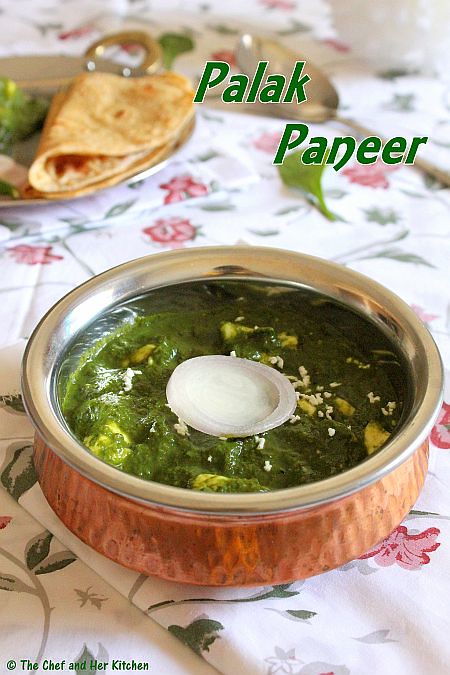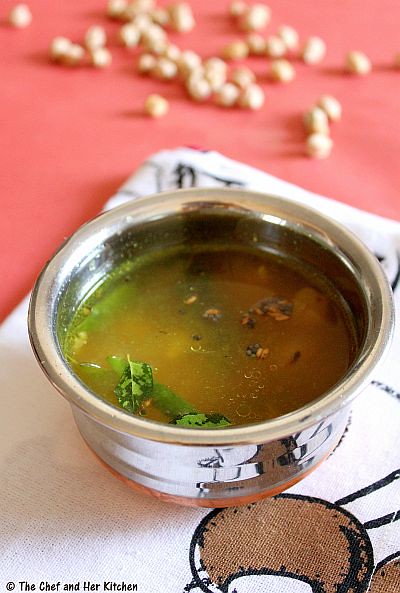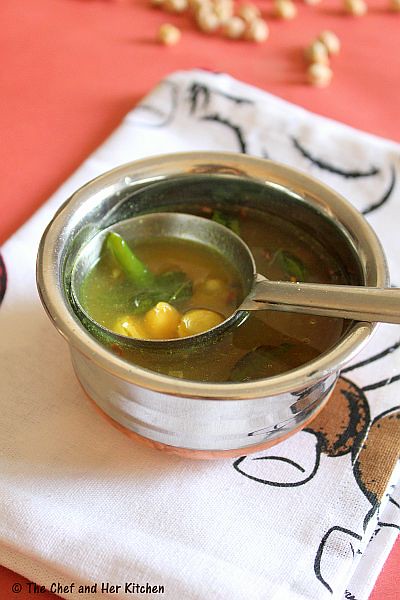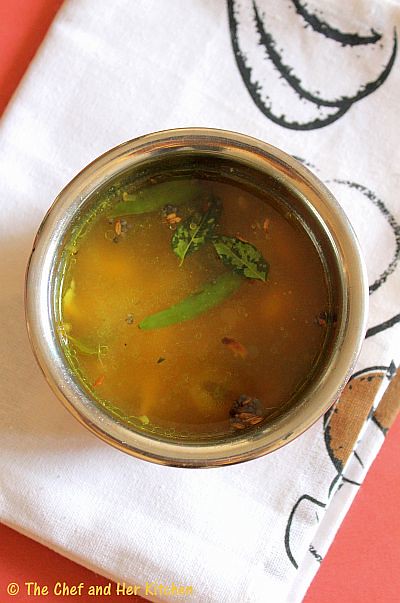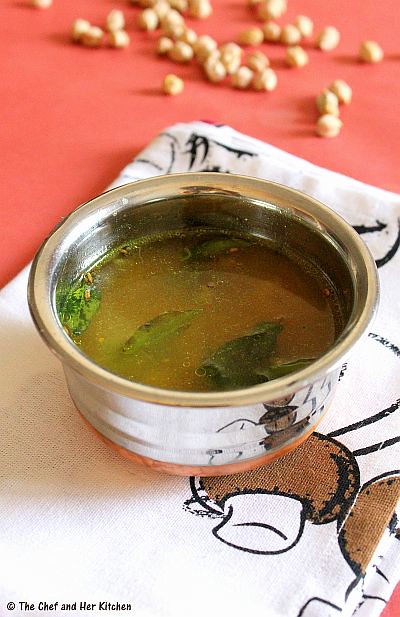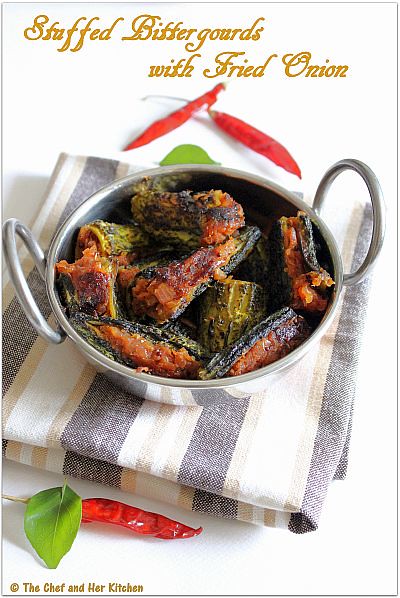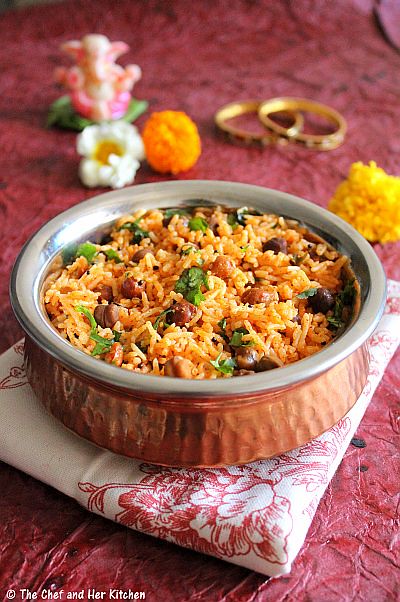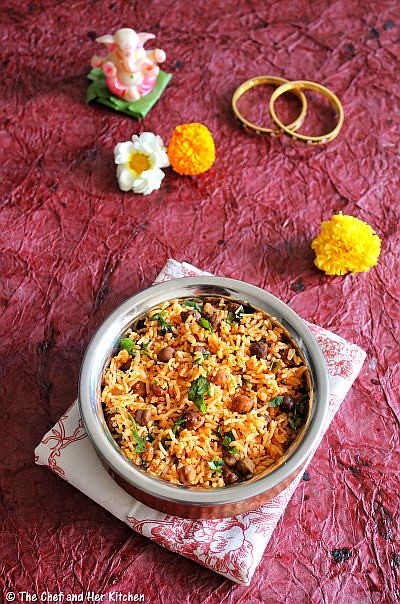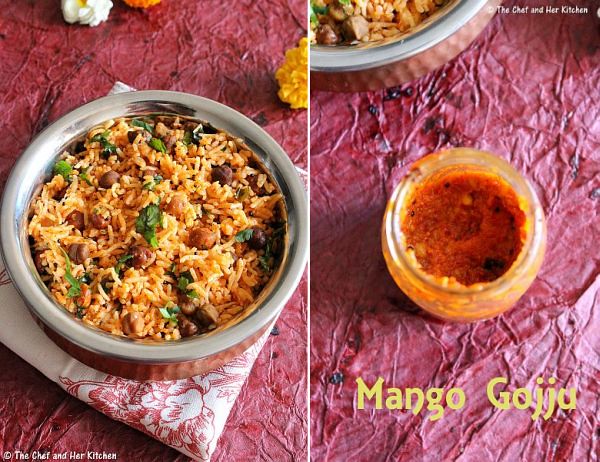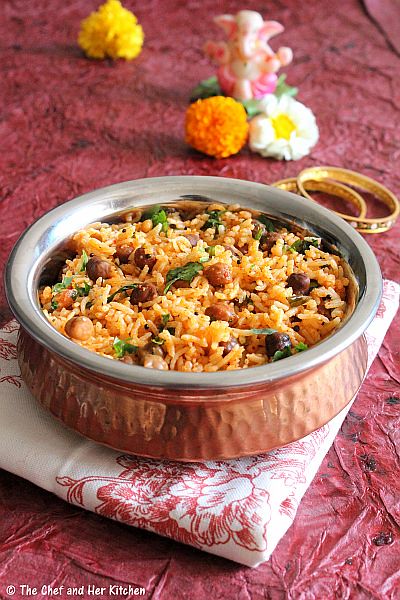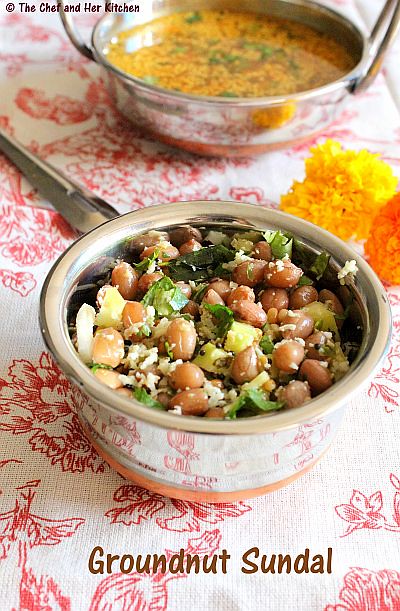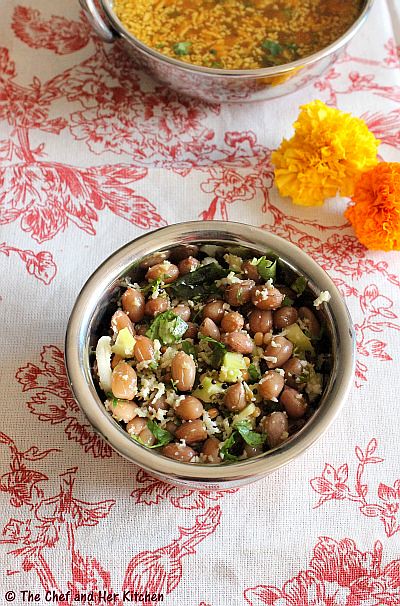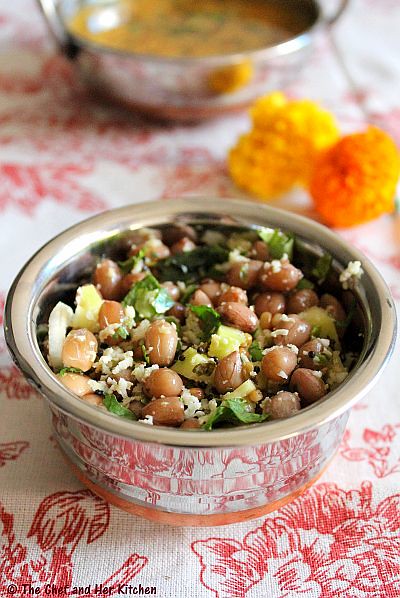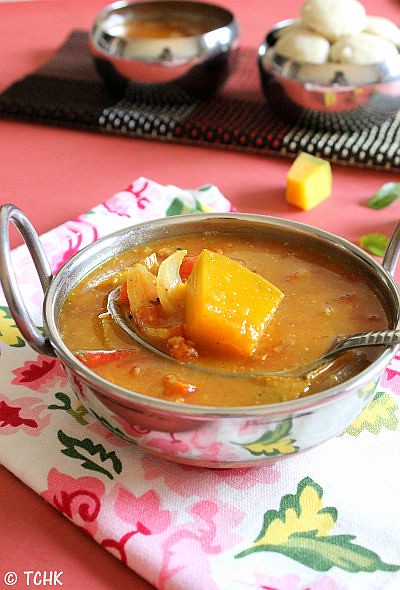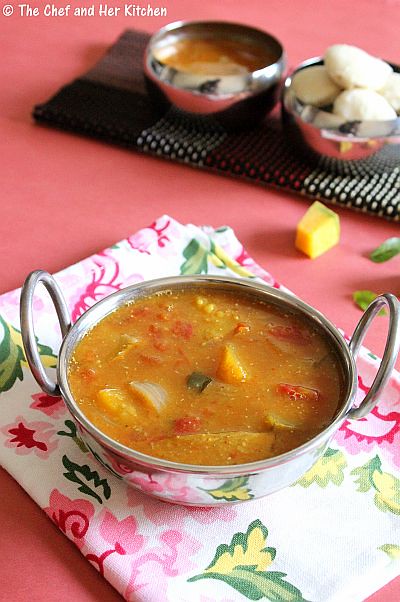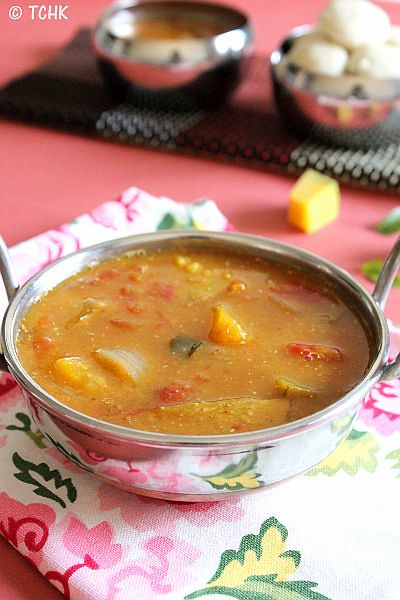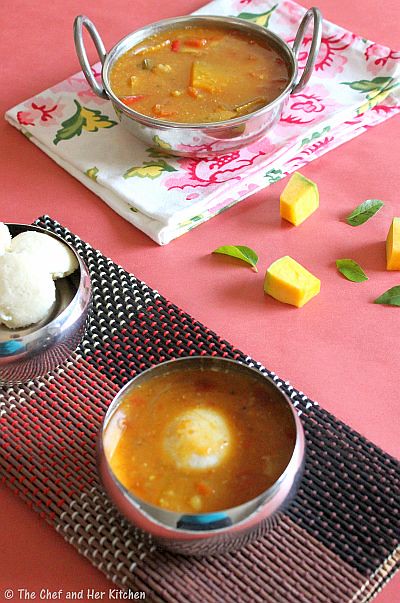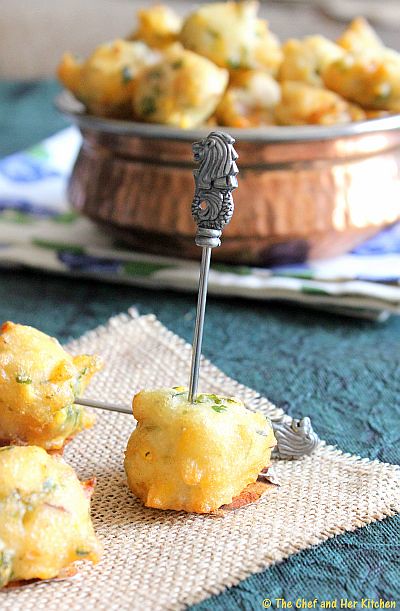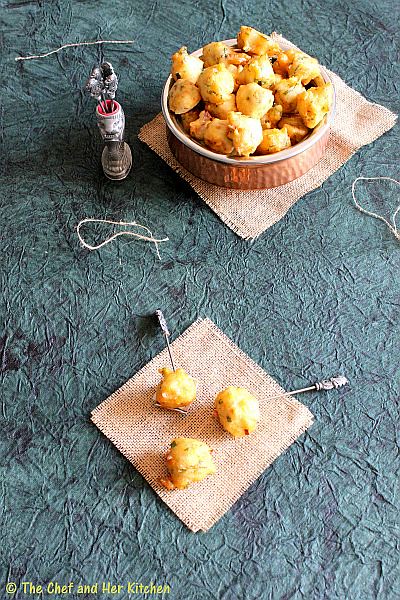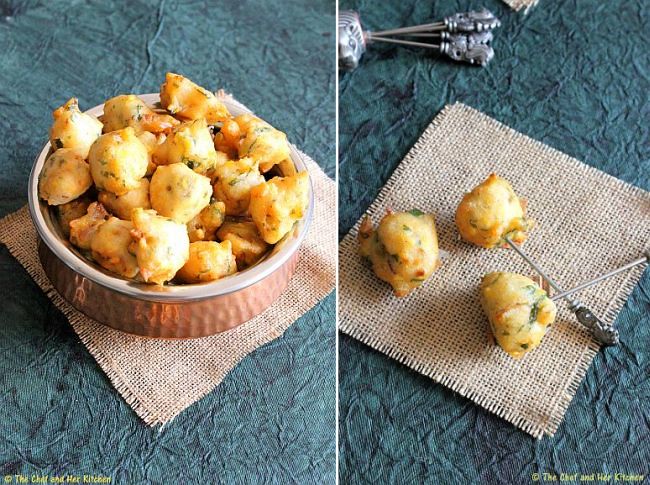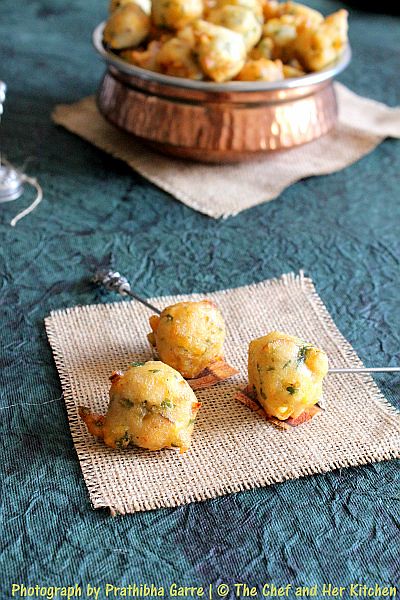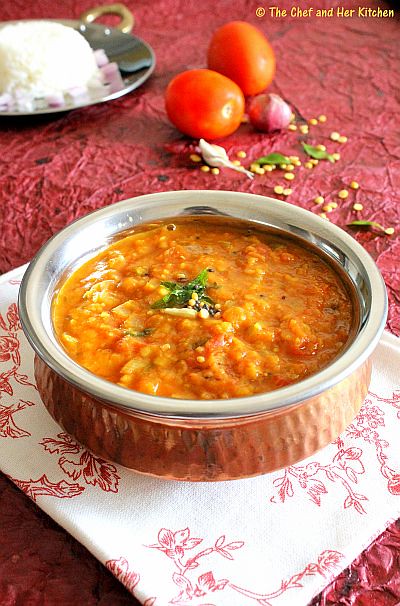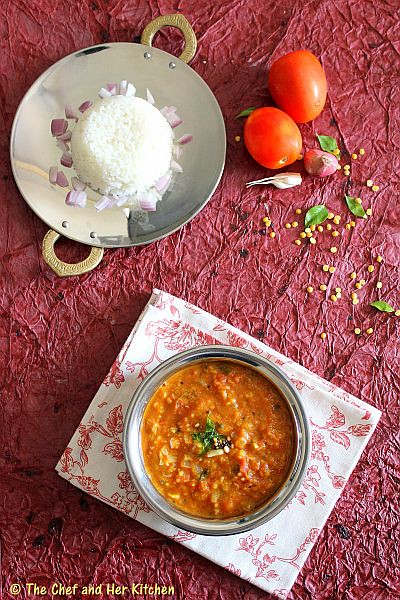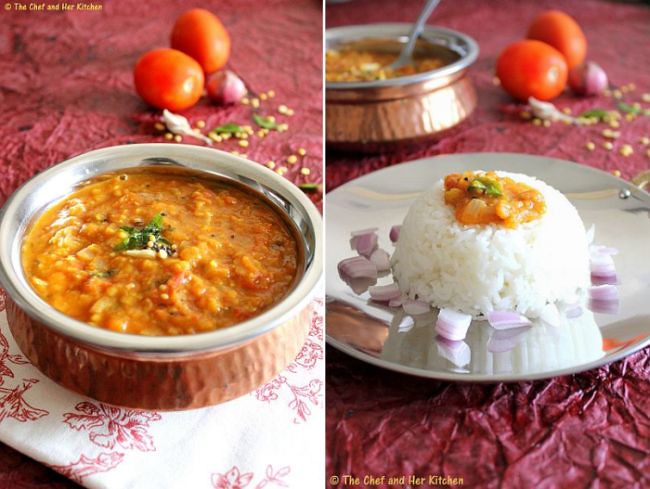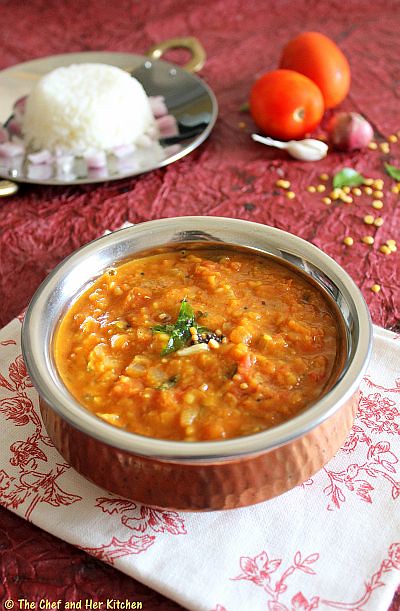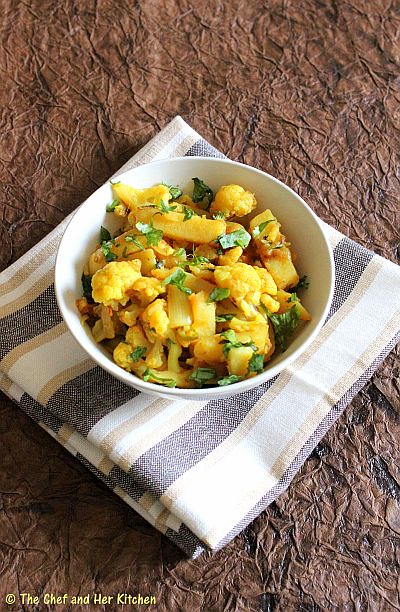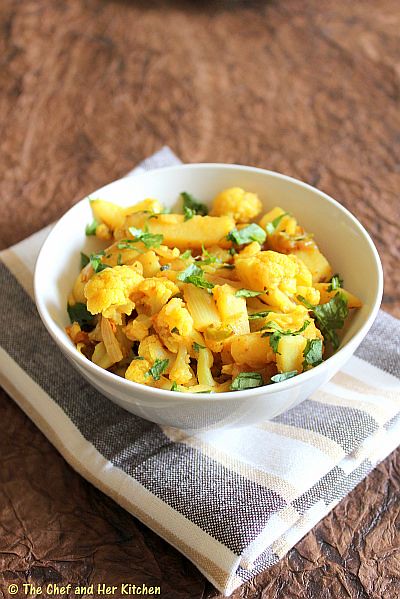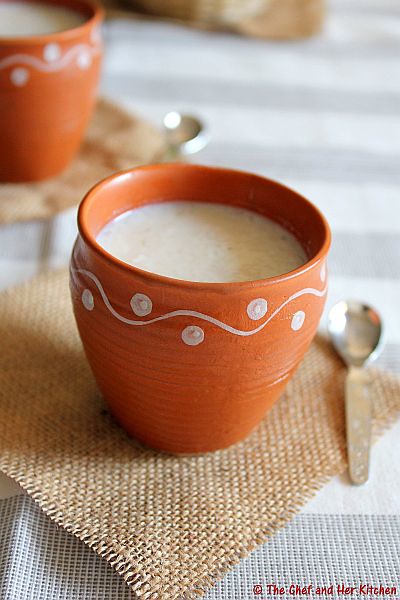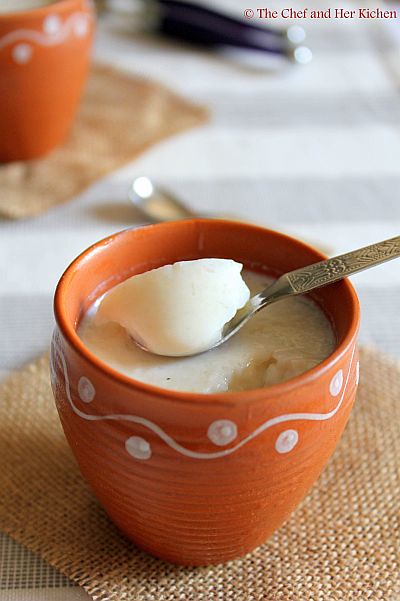Paneer(cottage cheese) based dishes, as a thumb rule, appear at least once a week in our menu as TH is very fond of it, a liking which even I share. In my childhood days , paneer dishes were a must order dish, whenever we visited any north Indian joint. After coming to Mumbai, my craze for paneer has increased as the paneer available here is extremely soft and tasty. Its called malai paneer and is widely available here.I use it for sandwiches, chinese, pulavs, grilled paneer, stuffing for flat breads and breads, curries, gravies and love it in any form.
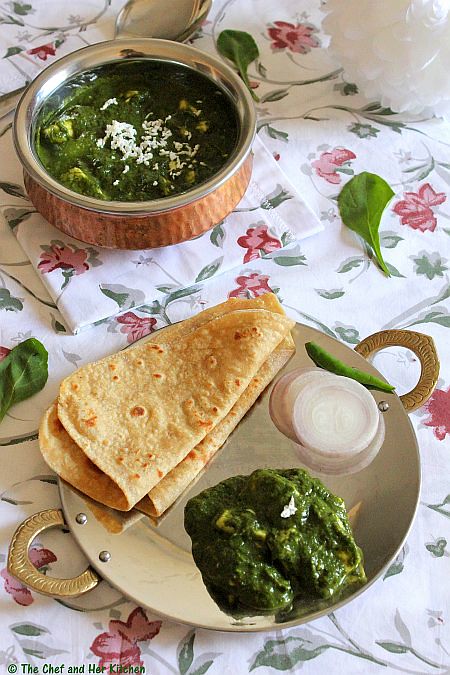 'Palak Paneer' - Cottage Cheese in Spinach gravy, is a classic combination is a very popular North Indian gravy which goes well with Indian flat breads like Naan, Kulcha, Roti etc.While there are many variations to this recipe with methi greens and saag, I am posting the most common Palak Paneer recipe. Check out the other versions I posted earlier Rajma Palak, Aloo Palak, Grilled Corn Palak Paneer which are slightly different or can be prepared in a similar procedure.I have mentioned a few tips and tricks to keep the paneer soft and also to retain the bright green color of the greens, so please follow the notes carefully for an amazing Palak Paneer gravy.
'Palak Paneer' - Cottage Cheese in Spinach gravy, is a classic combination is a very popular North Indian gravy which goes well with Indian flat breads like Naan, Kulcha, Roti etc.While there are many variations to this recipe with methi greens and saag, I am posting the most common Palak Paneer recipe. Check out the other versions I posted earlier Rajma Palak, Aloo Palak, Grilled Corn Palak Paneer which are slightly different or can be prepared in a similar procedure.I have mentioned a few tips and tricks to keep the paneer soft and also to retain the bright green color of the greens, so please follow the notes carefully for an amazing Palak Paneer gravy. Palak Paneer | Cottage Cheese in Spinach Gravy Recipe:
Palak Paneer | Cottage Cheese in Spinach Gravy Recipe:(serves 2)
Ingredients:
250 gms Homemade Paneer (or store bought)
1 big bunch fresh Spinach(Palak)
1/4 cup fresh Cream or 1/2 cup whole Milk
2 medium Onions,roughly chopped
4-5 Green chillies
2 tsp Ginger-Garlic paste
2 tsp Coriander powder
1 tsp Cumin powder
1/2 tsp Garam masala
1/2 tsp Amchur powder
3/4 tsp Kasuri methi
a pinch of Sugar
1/2 lemon,cut into wedges
1/2 tsp Cumin seeds
Salt to taste
2 tsp Butter
1 tbsp Oil
 Method:
Method:- Clean and wash spinach and chop it roughly.
- Heat 1tsp oil in a big pan and add green chillies and fry them until you see brown patches forming on them and remove them aside.
- In the same pan add chopped spinach and saute until the leaves wilt,add a pinch of sugar while cooking spinach which helps in retaining color.This process takes 4-5 mins.Cool the spinach.
- Meanwhile grind the onions to a fine paste.
- Cut paneer into big cubes or slabs according to your wish,immerse this in warm-medium hot water until its usage.
- Heat 2 tsp oil in a big kadai and crackle cumin seeds.Add ginger-garlic paste and ground onion paste and fry well until the mixture is light brown in color and the rawness of onions disappears.
- Add coriander powder,cumin powder,garam masala and kasuri methi(slightly rub it in between your fingers while adding)to it and fry for a couple of minutes.
- Mean while grind the spinach with fries green chillies to a fine puree.If you are doing it ahead remember to open the mixer after it is ground or transfer the mixture into a bowl.Don't keep the ground mixture covered for a long time as it will loose its beautiful color.
- Add the spinach puree to the fried masala and add enough salt,amchur powder to it and cook it open over medium flame for 3-4 mins.
- Drain the paneer out of hot water and gently squeeze to remove extra water and add it to the spinach gravy and cook for another 2-3 mins until the gravy coats paneer cubes and also helps the paneer absorb the flavors.
- Add butter to it and a give a nice mix.
- Add cream and give a gentle mix and switch off the flame.If you are using milk add the milk after you switch off the flame.
- You can squeeze lemon now or serve the lemon wedges with curry so that you can squeeze it over curry while eating like how it is served in restaurants.I prefer the second way for palak paneer especially.But do remember lemon is essential to give the sourness to palak paneer as I did not use tomatoes in the gravy and also I used just 1/2tsp of amchur powder.
- Garnish with some grated paneer and a blob of butter.
Serve the gravy hot with any kind of Indian breads like Roti/Naan/Chapati/Paratha/Kulcha or Pulav.Also serve sliced onions and lemon wedges along with it.
 Notes:
Notes:
 Notes:
Notes:- Its a basic thumb rule to remember,do not cover while cooking any greens as they loose the beautiful green color.If you want to make it ahead and keep the gravy ready you cover it with a lid only after it comes to a room temperature.You can use perforated plate while cooling.
- I mentioned many times before that I do not combine palak and tomato as I believe that combination would lead to stone formation(though I am not sure).Hence addition of amchur powder and lemon juice is essential to give the sour factor to the gravy.If you want you can add tomato puree while sauteing and cut the amchur powder.
- If you are using frozen or packaged paneer always immerse the paneer in hot water which makes it super soft and moist.
- If you want you can shallow fry the paneer in oil and immerse in hot water,as I always use fresh malai paneer which is amazingly soft I do not feel like frying it.

Variations:
- Spinach gravy is as versatile as the most common tomato gravy.I already have blogged various versions with spinach gravy like Rajma Palak, Aloo Palak, Grilled Corn Palak Paneer which are slightly different or can be followed in the same way.
- You can follow the same process and add boiled chana(white chickpeas) instead of paneer and avoid cream in it which makes tasty Chana palak.

Check out other Paneer recipes in my blog:

 Vegetables
Vegetables


